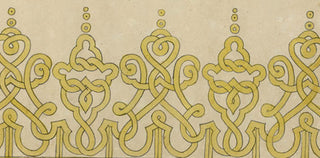If you’re someone who admires decorative embellishments, embroidery, and intricate design details, it’s time to get acquainted with passementerie. This artistic embellishment has a fascinating history and is trending this autumn.

Passementerie is a French art form that reached a height of popularity in the 18th century and involves adding trimmings such as tassels and braided cords to decorate an item’s edges. Members of French society recognized the visual appeal that passementerie brought to the pieces that included it, and they acknowledged the painstaking attention crafters had to maintain for best results.
Before passementerie’s popularity boom in the 18th century, the 16th century saw the creation of the Guild of Passementiers. The passementerie had the necessary training to help this type of decorative art flourish, and becoming a member of the Guild required going through a seven-year apprenticeship first. If successful, the candidate would then be a master in one of the Guild’s subdivisions.
Members of the elite classes were once the people who primarily decorated with passementerie. They viewed the delicate and intricate tassel designs as indicators of an upscale, lavish lifestyle. And still today, this highly-skilled craftsmanship is most often seen on the runway in couture fashion.

Our newest licensee, Musée des Arts Décoratifs, an incredible resource that is preserving the work of this art form. To create our fall Passementerie design, we combed through their archives of antique designs for passementerie in search of the perfect pattern to incorporate into the layout for our napkins.
The museum's archives included many hand-painted designs for passementerie that date from the very early 1700s.
By decorating with products featuring passementerie in your home and including them on your table, you’ll pay homage to this classic art form, which has remained popular through the ages. Including this detailing in your table linens and napkins helps this long-standing and lovely type of artistic expression live on through modern times.





